Abstract
Shanghai is the largest industrial centre in China and has a history of about 50 years in producing and applying benzidine derived dyes. A series of epidemiological studies on the carcinogenicity of benzidine and its derived dyes have been performed since 1979. This report describes three such studies. A case-control study was carried out on 344 cases of bladder cancer, each matched for age and sex, with a person without bladder cancer. Factors studied were occupational exposure, smoking, drinking, medical histories, and family history of bladder cancer and other carcinomas. The correlation between bladder cancer and occupational exposures (relative risk (RR) 5.71) was greater than that between bladder cancer and smoking (RR 1.53). A retrospective cohort study was conducted in seven dyestuffs factories where benzidine had served as an intermediate in the manufacture of dyes before 1976. The cohort was made up of 550 men and 186 women. The men were divided into two groups according to job; 354 were assigned to a presynthesis group and 196 to a postsynthesis group. Those in the presynthesis group were thought to have been exposed to benzidine and the subjects in the postsynthesis group were exposed mainly to its derived dyes. The 15 cases of bladder cancer diagnosed were all in the presynthesis group, although an excess of bladder cancer was also seen in the whole cohort. The standardised incidence ratio (SIR) of bladder cancer was 1918 in the whole cohort and 3500 in the presynthesis group. Moreover, the SIR of bladder cancer in a subgroup working directly with the assignment, transport, and mixing of benzidine was as high as 7500. A further retrospective cohort study was made on incidence of cancer among 1420 workers who used benzidine derived dyes in 43 textile printing and dyeing factories. No excess carcinoma was found. These results suggest that, in Shanghai, the main cause of bladder cancer is occupational exposure, especially to benzidine. The risk of bladder cancer, however, existed only in the presynthesis stage of dye manufacture.
Full text
PDF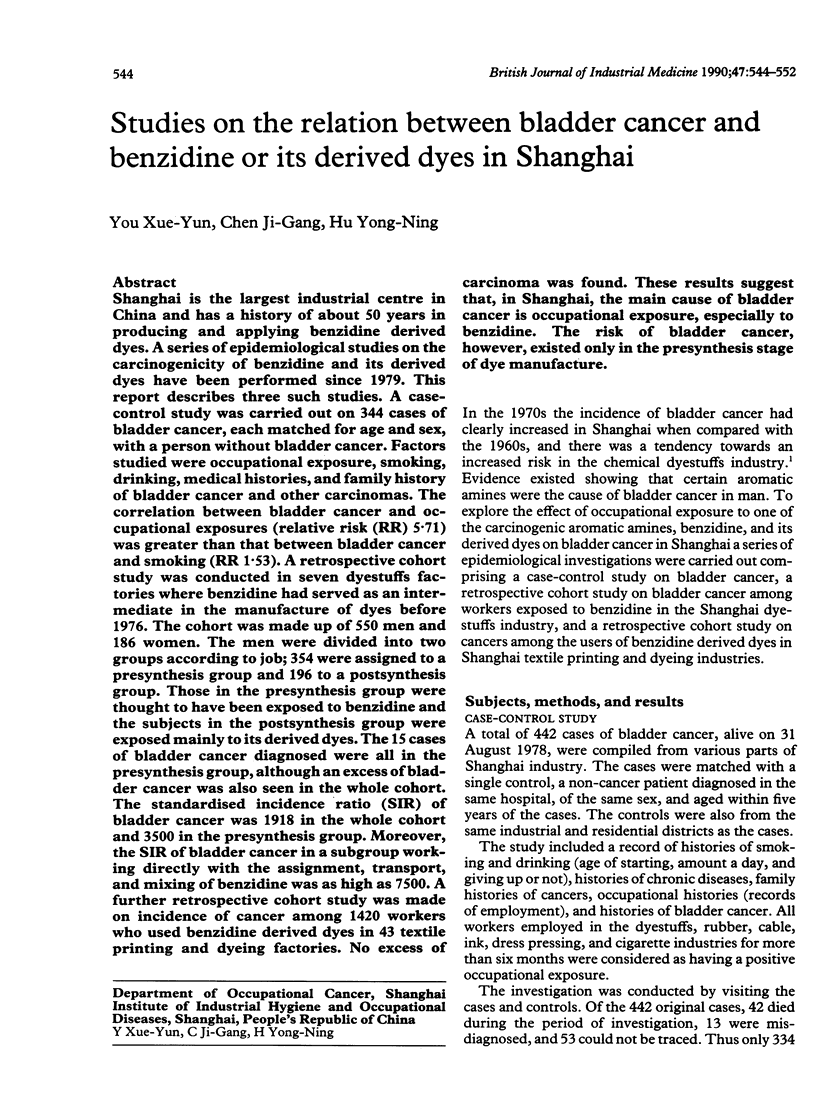
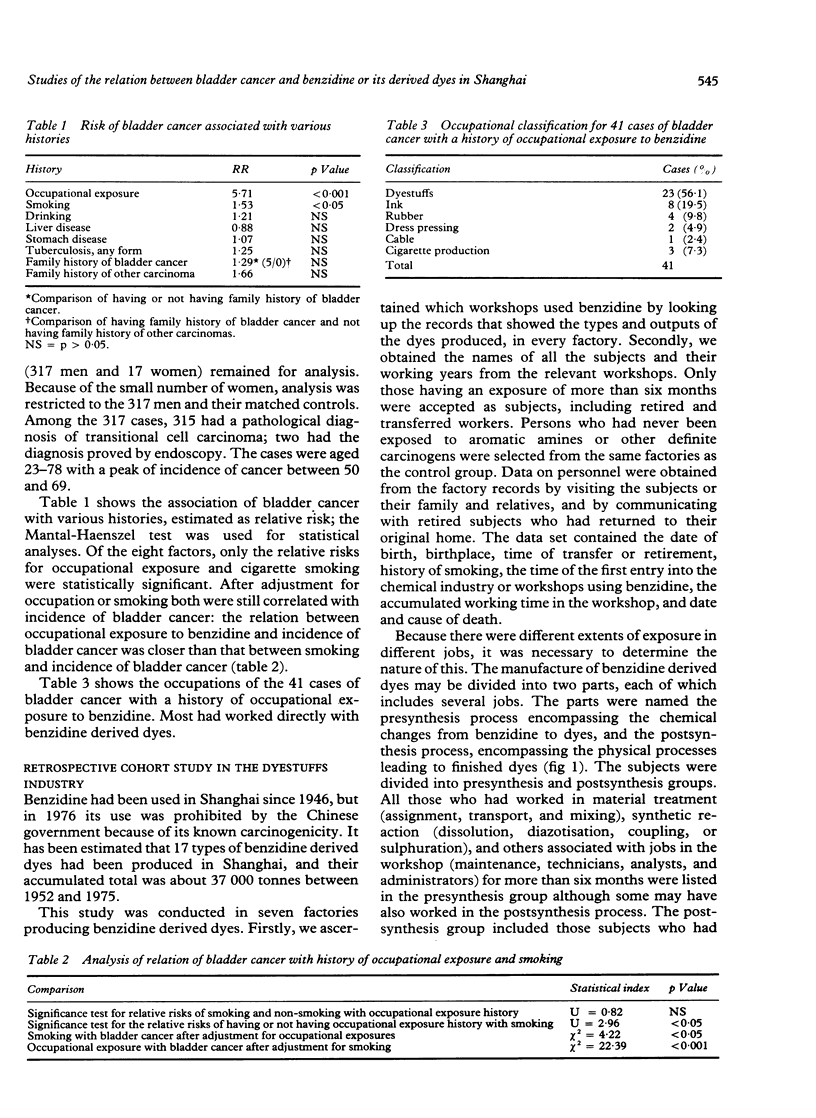
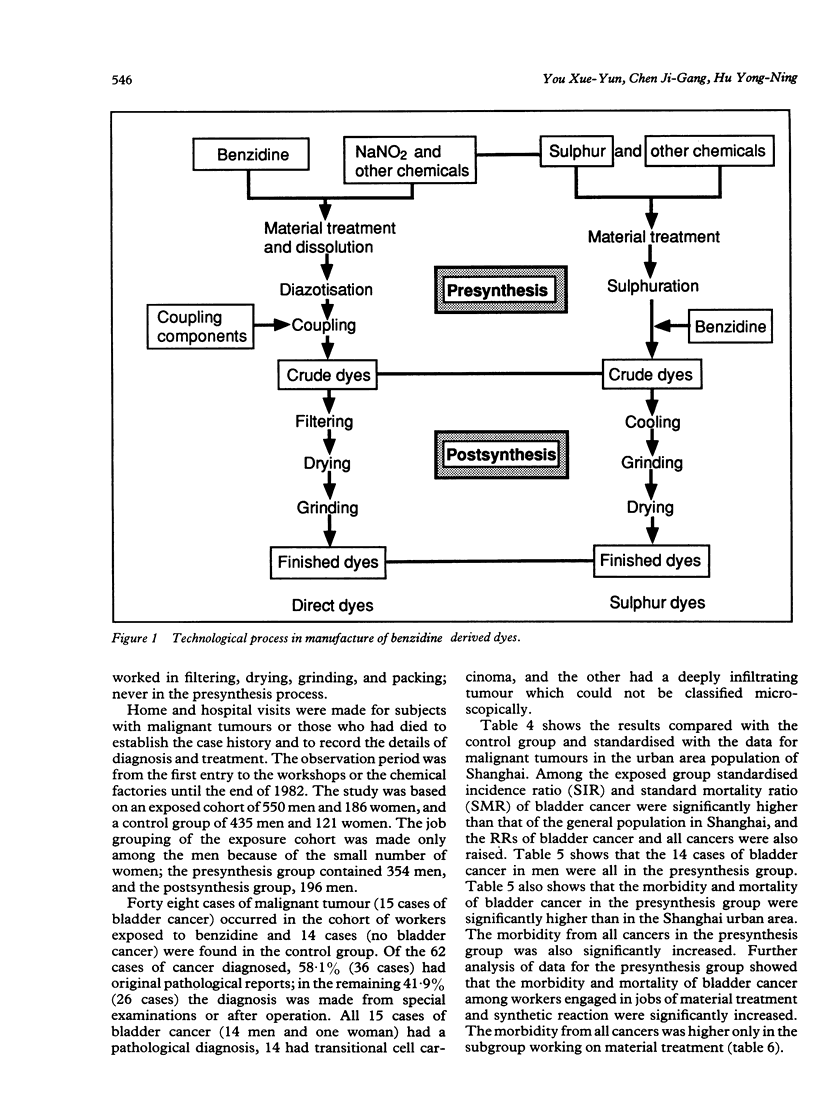
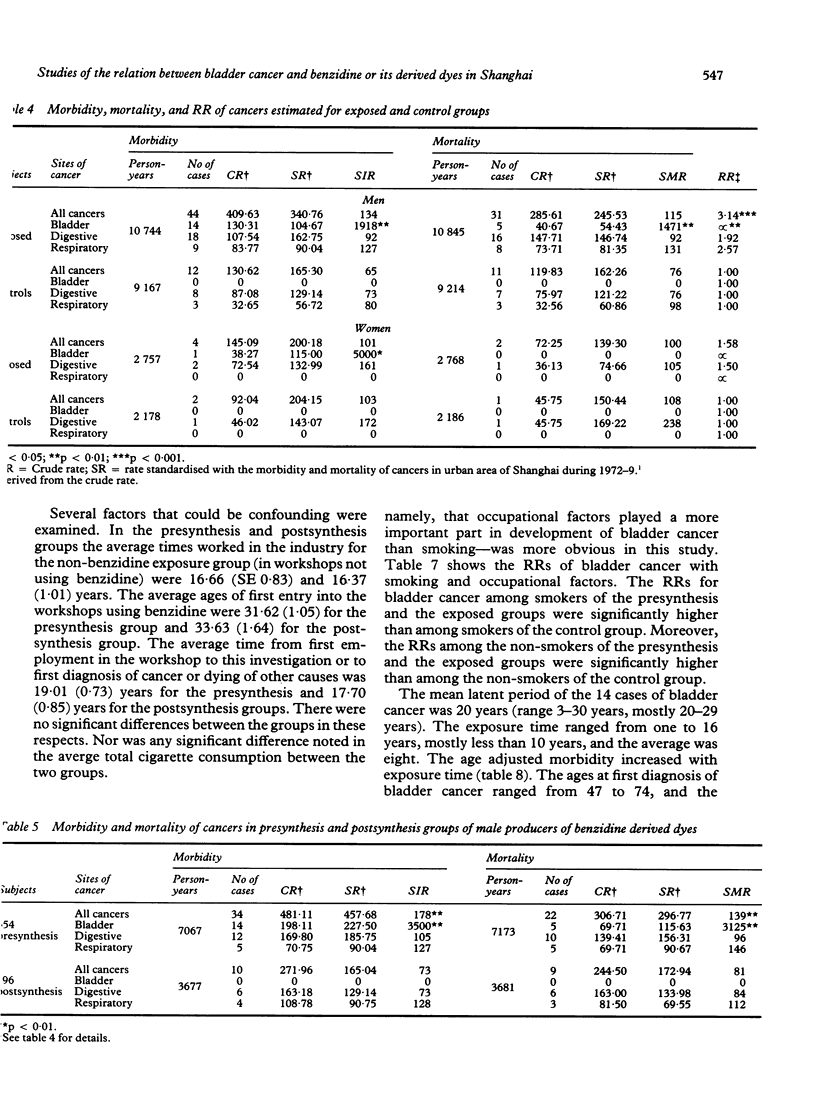
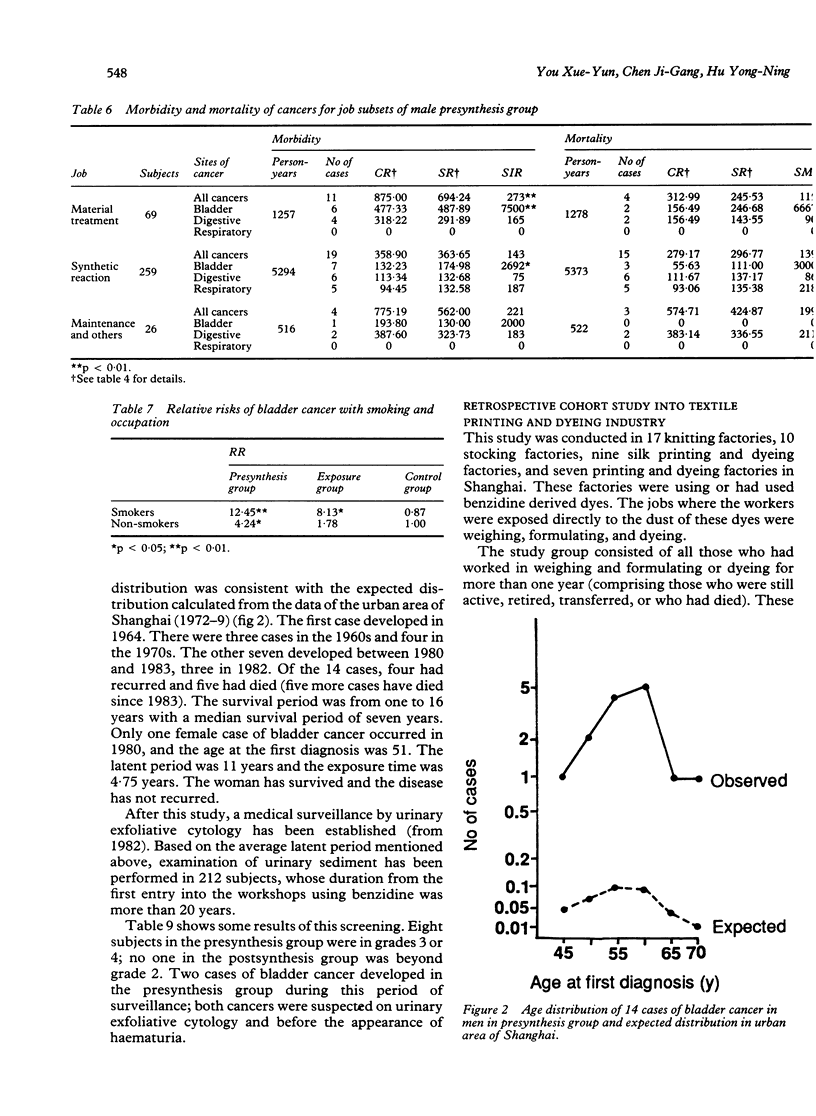
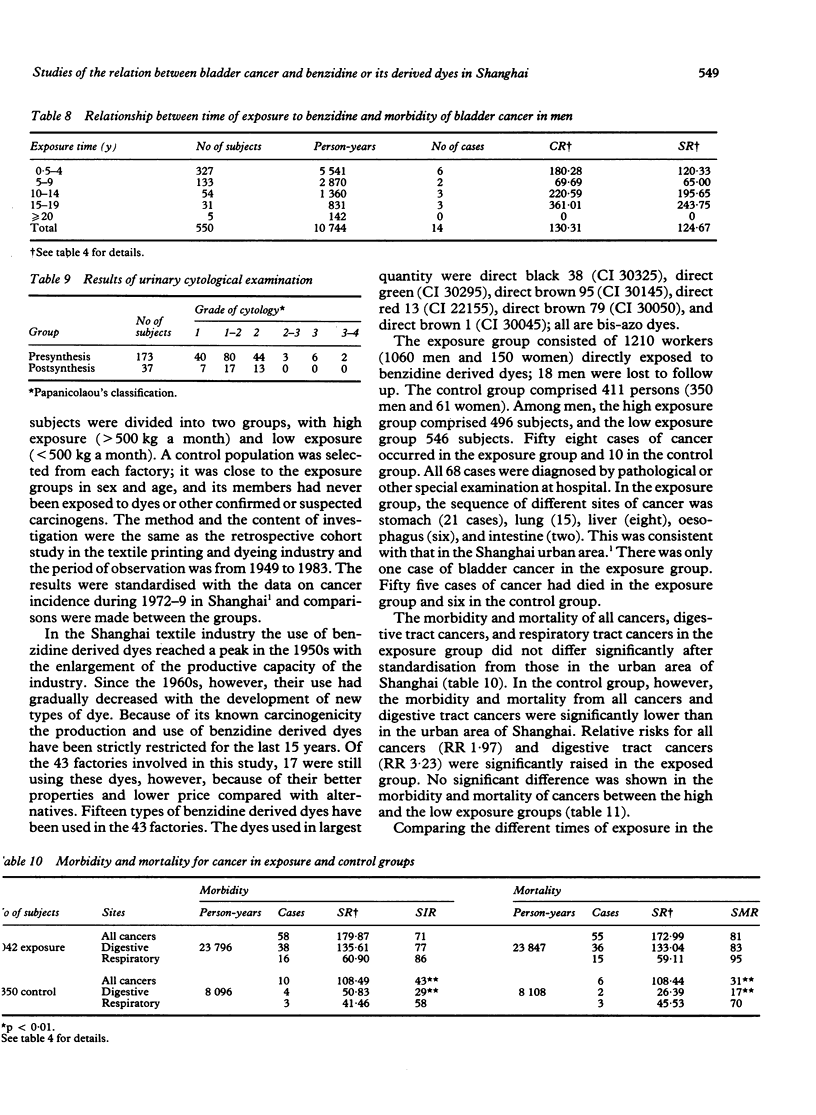
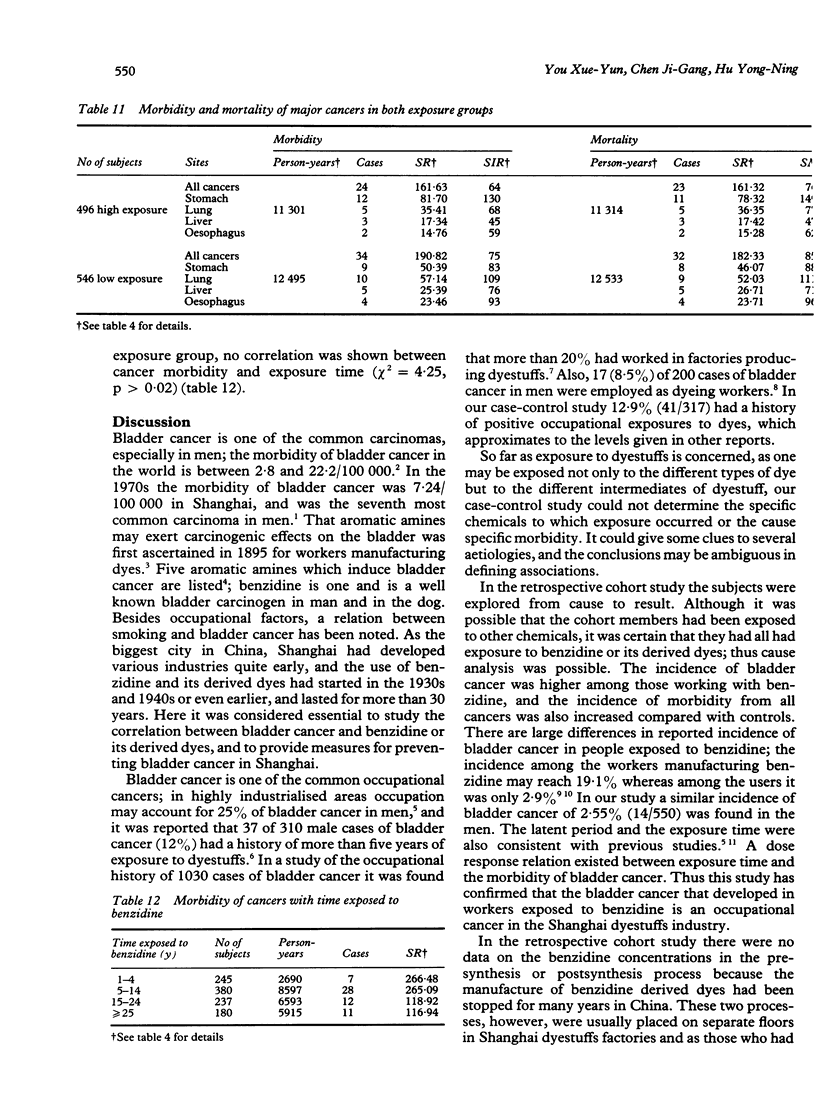
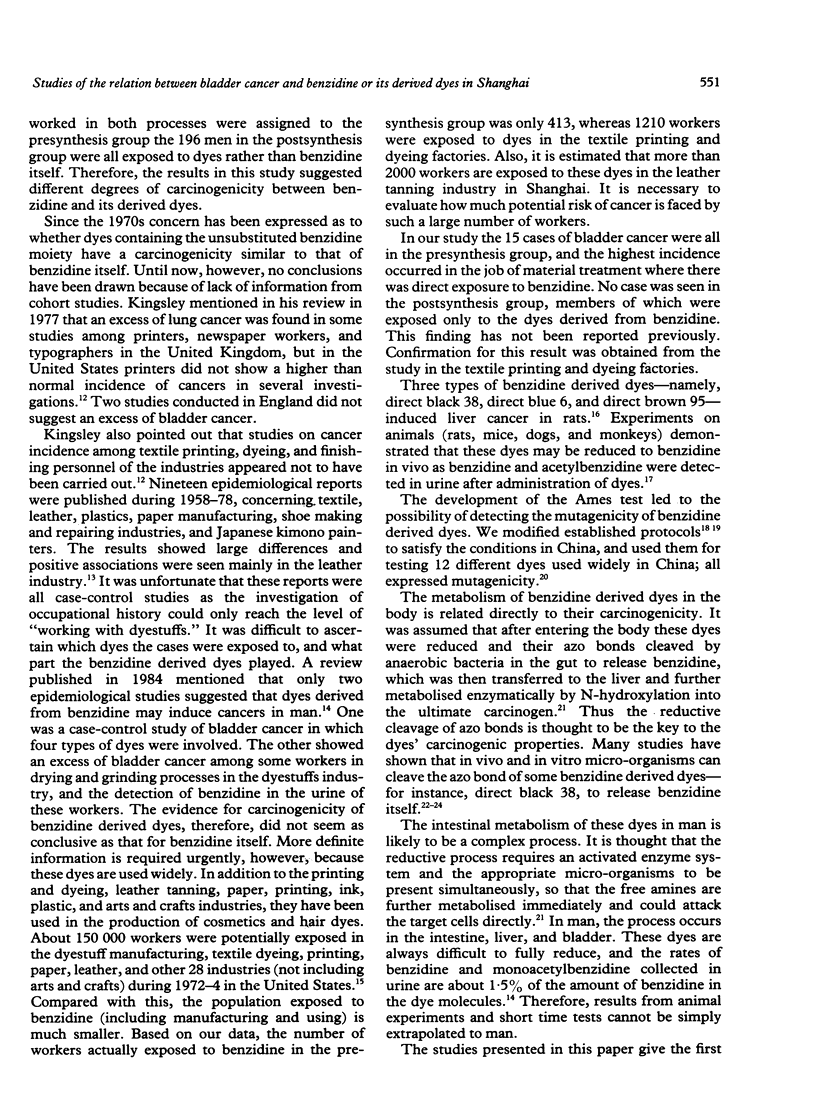
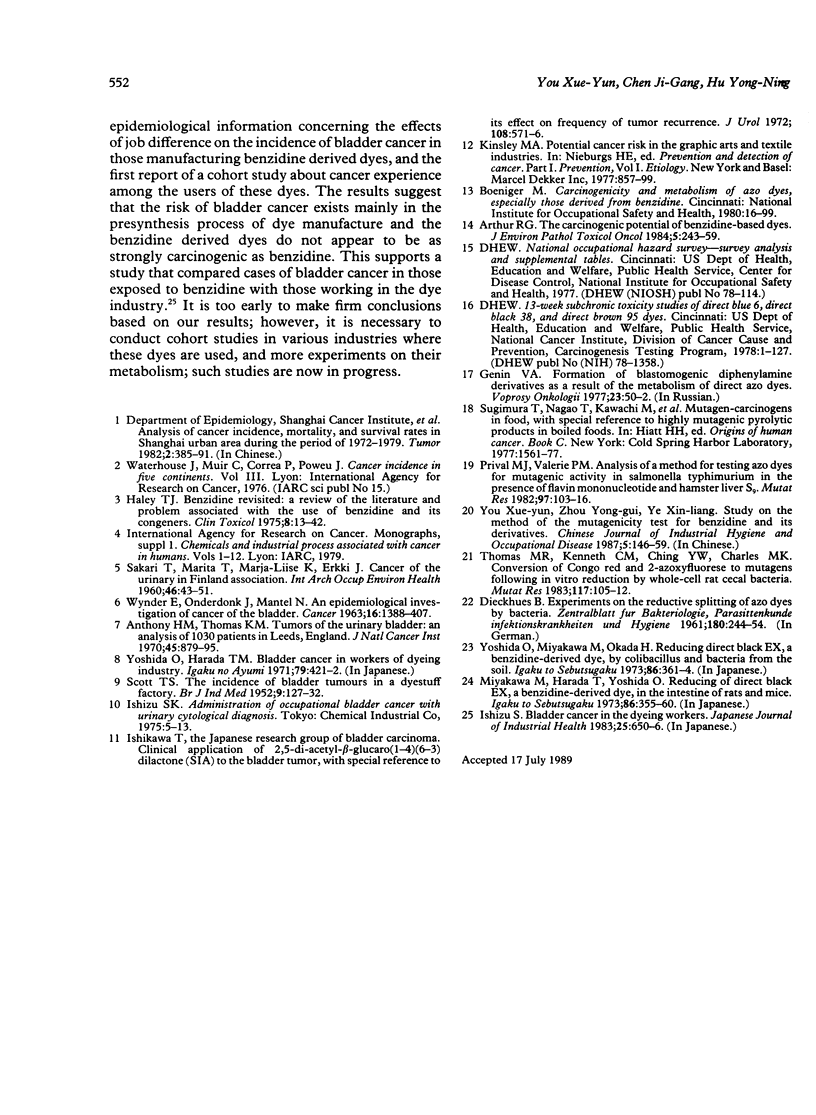
Selected References
These references are in PubMed. This may not be the complete list of references from this article.
- Genin V. A. Obrazovanie blastomogennykh aminoproizvodnykh difenila v rezul'tate metabolizma priamykh azokrasitelei. Vopr Onkol. 1977;23(9):50–52. [PubMed] [Google Scholar]
- Gregory A. R. The carcinogenic potential of benzidine-based dyes. J Environ Pathol Toxicol Oncol. 1984 Jul;5(4-5):243–259. [PubMed] [Google Scholar]
- Haley T. J. Benzidine revisited: a review of the literature and problems associated with the use of benzidine and its congeners. Clin Toxicol. 1975;8(1):13–42. doi: 10.3109/15563657508988044. [DOI] [PubMed] [Google Scholar]
- Prival M. J., Mitchell V. D. Analysis of a method for testing azo dyes for mutagenic activity in Salmonella typhimurium in the presence of flavin mononucleotide and hamster liver S9. Mutat Res. 1982 Apr;97(2):103–116. doi: 10.1016/0165-1161(82)90008-5. [DOI] [PubMed] [Google Scholar]
- Reid T. M., Morton K. C., Wang C. Y., King C. M. Conversion of Congo red and 2-azoxyfluorene to mutagens following in vitro reduction by whole-cell rat cecal bacteria. Mutat Res. 1983 Apr;117(1-2):105–112. doi: 10.1016/0165-1218(83)90157-x. [DOI] [PubMed] [Google Scholar]
- SCOTT T. S. The incidence of bladder tumours in a dyestuffs factory. Br J Ind Med. 1952 Apr;9(2):127–132. doi: 10.1136/oem.9.2.127. [DOI] [PMC free article] [PubMed] [Google Scholar]
- WYNDER E. L., ONDERDONK J., MANTEL N. AN EPIDEMIOLOGICAL INVESTIGATION OF CANCER OF THE BLADDER. Cancer. 1963 Nov;16:1388–1407. doi: 10.1002/1097-0142(196311)16:11<1388::aid-cncr2820161104>3.0.co;2-8. [DOI] [PubMed] [Google Scholar]


